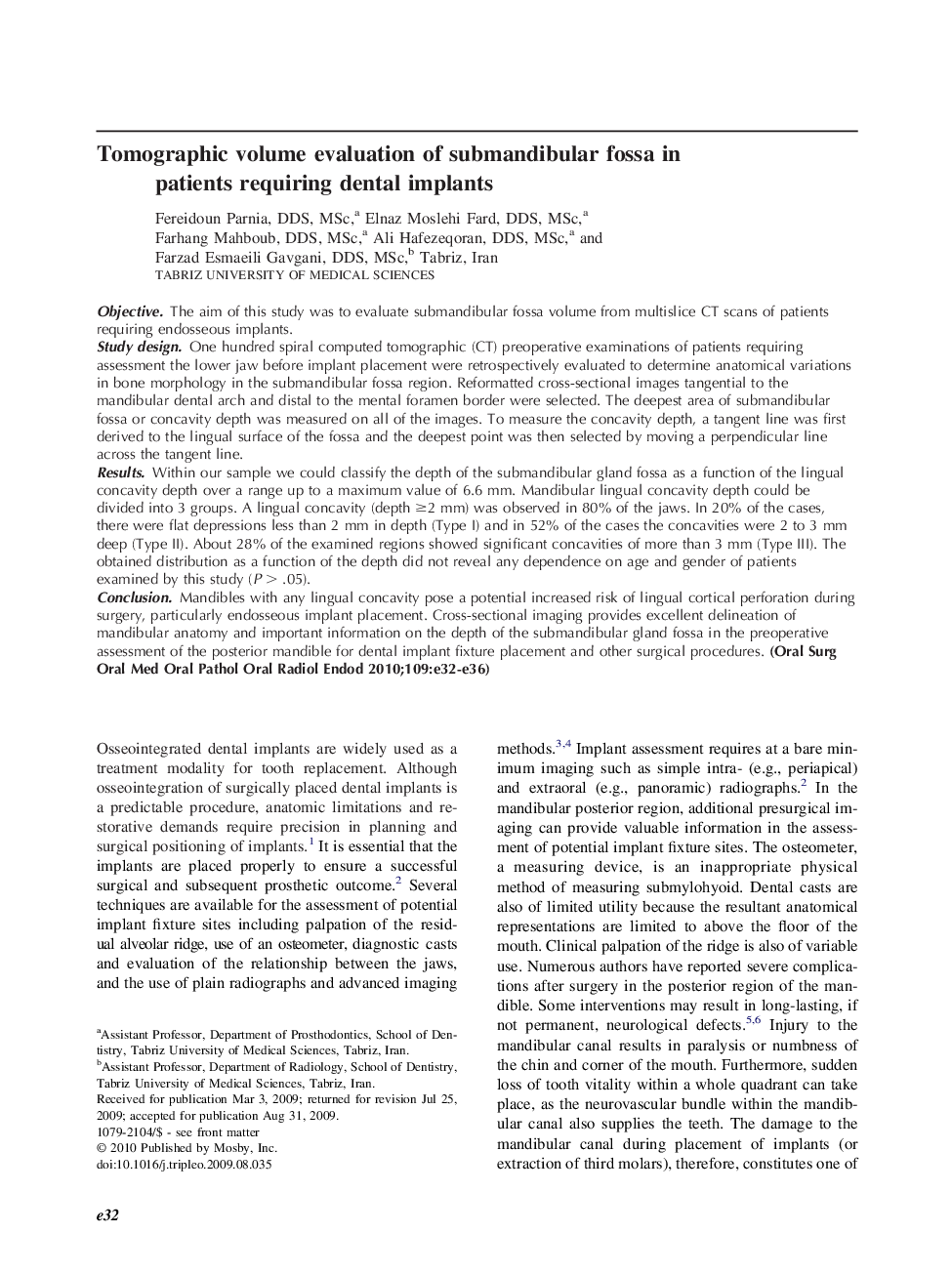| کد مقاله | کد نشریه | سال انتشار | مقاله انگلیسی | نسخه تمام متن |
|---|---|---|---|---|
| 3167750 | 1199377 | 2010 | 5 صفحه PDF | دانلود رایگان |

ObjectiveThe aim of this study was to evaluate submandibular fossa volume from multislice CT scans of patients requiring endosseous implants.Study designOne hundred spiral computed tomographic (CT) preoperative examinations of patients requiring assessment the lower jaw before implant placement were retrospectively evaluated to determine anatomical variations in bone morphology in the submandibular fossa region. Reformatted cross-sectional images tangential to the mandibular dental arch and distal to the mental foramen border were selected. The deepest area of submandibular fossa or concavity depth was measured on all of the images. To measure the concavity depth, a tangent line was first derived to the lingual surface of the fossa and the deepest point was then selected by moving a perpendicular line across the tangent line.ResultsWithin our sample we could classify the depth of the submandibular gland fossa as a function of the lingual concavity depth over a range up to a maximum value of 6.6 mm. Mandibular lingual concavity depth could be divided into 3 groups. A lingual concavity (depth ≥2 mm) was observed in 80% of the jaws. In 20% of the cases, there were flat depressions less than 2 mm in depth (Type I) and in 52% of the cases the concavities were 2 to 3 mm deep (Type II). About 28% of the examined regions showed significant concavities of more than 3 mm (Type III). The obtained distribution as a function of the depth did not reveal any dependence on age and gender of patients examined by this study (P > .05).ConclusionMandibles with any lingual concavity pose a potential increased risk of lingual cortical perforation during surgery, particularly endosseous implant placement. Cross-sectional imaging provides excellent delineation of mandibular anatomy and important information on the depth of the submandibular gland fossa in the preoperative assessment of the posterior mandible for dental implant fixture placement and other surgical procedures.
Journal: Oral Surgery, Oral Medicine, Oral Pathology, Oral Radiology, and Endodontology - Volume 109, Issue 1, January 2010, Pages e32–e36